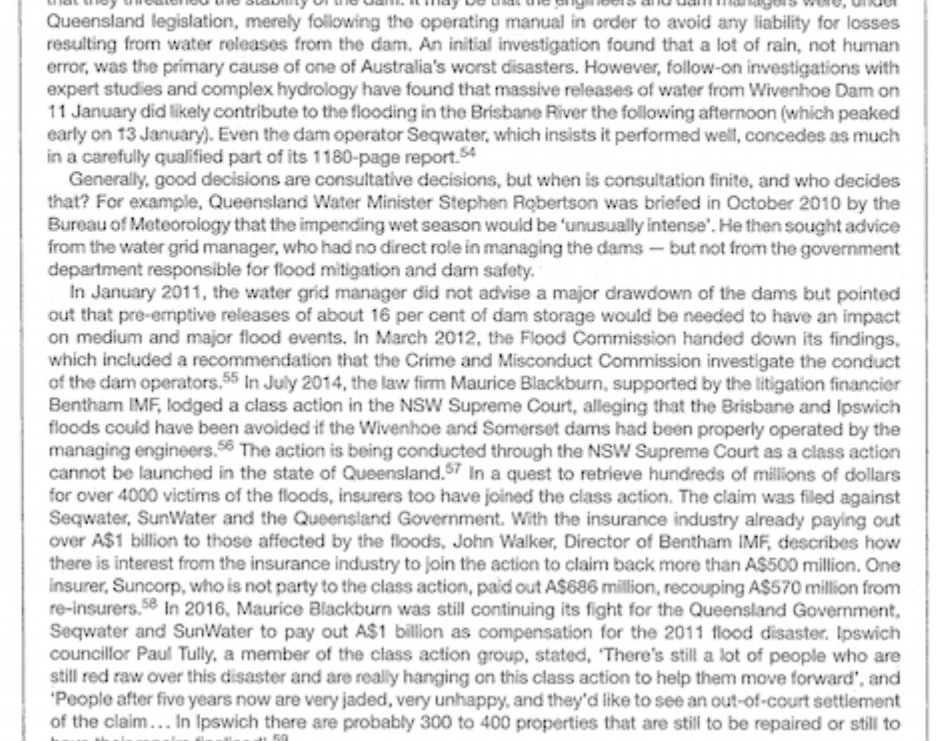Queensland legislation, merely following the operating manual in order to avoid any liability for losses resulting from water releases from the dam. An initial investigation found that a lot of rain, not human error, was the primary cause of one of Australia's worst disasters. However, follow-on investigations with expert studies and complex hydrology have found that massive releases of water from Wivenhoe Dam on 11 January did likely contribute to the flooding in the Brisbane River the following afternoon (which peaked early on 13 January). Even the dam operator Seqwater, which insists it performed well, concedes as much in a carefully qualified part of its 1180-page report. $4 Generally, good decisions are consultative decisions, but when is consultation finite, and who decides that? For example, Queensland Water Minister Stephen Robertson was briefed in October 2010 by the Bureau of Meteorology that the impending wet season would be 'unusually intense'. He then sought advice from the water grid manager, who had no direct role in managing the dams - but not from the government department responsible for flood mitigation and dam safety. In January 2011, the water grid manager did not advise a major drawdown of the dams but pointed out that pre-emptive releases of about 16 per cent of dam storage would be needed to have an impact on medium and major flood events, In March 2012, the Flood Commission handed down its findings. which included a recommendation that the Crime and Misconduct Commission investigate the conduct of the dam operators,55 In July 2014, the law firm Maurice Blackburn, supported by the litigation financier Bentham IMF, lodged a class action in the NSW Supreme Court, alleging that the Brisbane and Ipswich floods could have been avoided if the Wivenhoe and Somerset dams had been properly operated by the managing engineers.56 The action is being conducted through the NSW Supreme Court as a class action cannot be launched in the state of Queensland.57 In a quest to retrieve hundreds of millions of dollars for over 4000 victims of the floods, insurers too have joined the class action. The claim was filed against Seqwater, SunWater and the Queensland Government. With the insurance industry already paying out over A$1 billion to those affected by the floods, John Walker, Director of Bentham IMF, describes how there is interest from the insurance industry to join the action to claim back more than A$500 million. One Insurer, Suncorp, who is not party to the class action, paid out A$686 million, recouping A$570 million from re-insurers.58 In 2016. Maurice Blackburn was still continuing its fight for the Queensland Government, Seqwater and SunWater to pay out A$1 billion as compensation for the 2011 flood disaster. Ipswich councillor Paul Tully, a member of the class action group, stated, 'There's still a lot of people who are still red raw over this disaster and are really hanging on this class action to help them move forward', and 'People after five years now are very jaded, very unhappy, and they'd like to see an out-of-court settlement of the claim... In Ipswich there are probably 300 to 400 properties that are still to be repaired or still to







